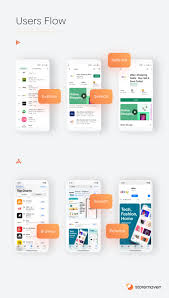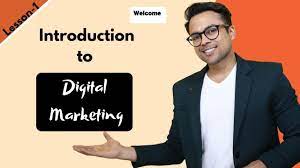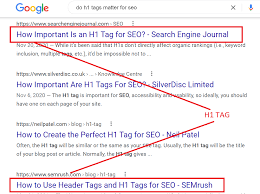In today’s digital age, content creation has become a crucial part of any successful online strategy. It refers to the process of producing and publishing information that is relevant, engaging, and valuable to your target audience. With the vast amount of information available on the internet, creating high-quality content has become more important than ever before.
One of the primary benefits of content creation is that it helps to establish your brand’s authority in your industry. By providing valuable insights and information, you can position yourself as an expert in your field and build trust with your audience. This, in turn, can lead to increased brand recognition and customer loyalty.
Another advantage of content creation is that it can help to drive traffic to your website. By optimizing your content for search engines like Google, you can increase your visibility online and attract more visitors to your site. Additionally, by sharing your content on social media platforms like Facebook, Twitter, and LinkedIn, you can reach a broader audience and generate more leads for your business.
When it comes to creating content, there are several different types that you can produce. Blog posts are one of the most popular forms of content and are an excellent way to provide valuable information to your audience while also improving your SEO rankings. Other types of content include videos, infographics, whitepapers, eBooks, podcasts, and webinars.
No matter what type of content you choose to create, it’s essential to ensure that it is relevant and engaging for your target audience. This means understanding their needs and interests so that you can provide them with the information they’re looking for. It’s also crucial to maintain a consistent brand voice across all of your content so that you can build a strong brand identity.
In conclusion, content creation is an essential component of any successful online strategy. By producing high-quality information that is relevant and engaging for your target audience, you can establish yourself as an authority in your industry while also driving traffic to your website and generating leads for your business. So, if you haven’t already started creating content, now is the time to get started!
7 Tips for Effective Content Creation: From Research to Promotion
- Research your topic thoroughly before writing to ensure accuracy and relevance.
- Use a variety of media to engage your audience (e.g. videos, infographics, podcasts).
- Make sure your content is easy to read by using clear language and formatting techniques such as headings, bulleted lists, and short paragraphs.
- Optimize your content for search engine optimization (SEO) by including relevant keywords in titles and meta descriptions.
- Incorporate visuals into your content when possible to make it more visually appealing and engaging for readers.
- Promote your content on social media platforms like Facebook, Twitter, Instagram, etc., to reach a wider audience base quickly with minimal effort required from you as the creator of the content .
- Monitor analytics data related to the performance of your content so that you can adjust strategies as needed for future campaigns or pieces of content that you create in order to maximize their effectiveness
Research your topic thoroughly before writing to ensure accuracy and relevance.
One of the most critical aspects of content creation is ensuring that your information is accurate and relevant. Researching your topic thoroughly before writing is a crucial step in achieving this goal.
When you research your topic, you gain a deeper understanding of the subject matter, which allows you to create more informed and valuable content for your audience. This means taking the time to read articles, books, and other resources related to your topic, as well as conducting interviews with experts in the field.
Researching your topic also helps to ensure that your content is accurate. By fact-checking your information and verifying your sources, you can avoid spreading misinformation or making errors that could damage your credibility.
In addition to accuracy and relevance, thorough research can also help you identify gaps in existing content. By understanding what information is already available on a particular topic, you can create content that fills those gaps and provides new insights for your audience.
Overall, researching your topic thoroughly before writing is an essential step in creating high-quality content. It allows you to provide accurate, relevant, and valuable information for your audience while also building trust and credibility with them. So next time you sit down to write, take the time to research your topic thoroughly – it will pay off in the long run!
Use a variety of media to engage your audience (e.g. videos, infographics, podcasts).
When it comes to content creation, it’s essential to keep your audience engaged and interested. One way to achieve this is by using a variety of media formats. By incorporating videos, infographics, podcasts, and other types of media into your content strategy, you can reach a broader audience and provide them with information in a format that they prefer.
Videos are an excellent way to engage your audience visually. They allow you to tell stories, demonstrate products or services, and provide valuable information in a dynamic and engaging way. Videos can also be shared on social media platforms like YouTube or Facebook, allowing you to reach a broader audience.
Infographics are another effective way to present information in a visually appealing format. They’re particularly useful for presenting complex data or statistics in an easy-to-understand way. Infographics can be shared on social media platforms or used as part of your blog posts or other content.
Podcasts are becoming increasingly popular as a way to engage audiences who prefer audio content. They’re particularly effective for providing in-depth analysis or interviews with experts in your field. Podcasts can also be shared on platforms like iTunes or SoundCloud, making them accessible to a wide range of listeners.
By using a variety of media formats, you can keep your audience engaged and interested in your content. It’s important to understand what types of media formats resonate with your target audience so that you can tailor your content accordingly. By doing so, you’ll be able to build a loyal following and establish yourself as an authority in your industry.
Make sure your content is easy to read by using clear language and formatting techniques such as headings, bulleted lists, and short paragraphs.
When it comes to content creation, one of the most important things to keep in mind is that your audience should be able to easily understand and engage with your content. This means using clear language and formatting techniques that make your content easy to read and digest.
One effective way to make your content more readable is to use headings. Headings break up your content into smaller, more manageable sections, making it easier for readers to navigate and find the information they’re looking for. Additionally, headings can help improve your SEO by providing search engines with a clear understanding of the structure of your content.
Another formatting technique that can help improve readability is bulleted lists. Lists are an excellent way to present information in a concise and organized manner, making it easier for readers to understand and remember. They are also visually appealing, which can help keep readers engaged with your content.
Short paragraphs are another critical element of easy-to-read content. Long paragraphs can be overwhelming and difficult to follow, especially when reading on a screen. By breaking up your text into shorter paragraphs, you can make it more visually appealing and easier for readers to consume.
Finally, using clear language is crucial when creating easy-to-read content. Avoid using jargon or technical terms that may be unfamiliar to your audience. Instead, use simple language that is easy for anyone to understand.
In conclusion, making sure that your content is easy to read is essential if you want it to be engaging and effective. By using formatting techniques such as headings and bulleted lists, as well as short paragraphs and clear language, you can create content that is both informative and enjoyable for your audience to read.
Optimize your content for search engine optimization (SEO) by including relevant keywords in titles and meta descriptions.
When it comes to content creation, one of the most important things to consider is search engine optimization (SEO). By optimizing your content for SEO, you can improve your website’s visibility and attract more visitors to your site. One effective way to do this is by including relevant keywords in your titles and meta descriptions.
Titles and meta descriptions are two of the most critical elements of any webpage. They provide a brief summary of what the page is about and help search engines understand what your content is all about. By including relevant keywords in these elements, you can improve your chances of ranking higher in search engine results pages (SERPs).
When choosing keywords for your titles and meta descriptions, it’s important to choose words or phrases that accurately reflect the content on the page. Avoid using generic or overly broad terms that are unlikely to attract the right audience. Instead, focus on specific keywords that are relevant to your target audience and reflect the topic of your content.
It’s also important to avoid keyword stuffing, which involves cramming as many keywords as possible into your titles and meta descriptions in an attempt to rank higher in SERPs. This practice is not only ineffective but can also harm your website’s credibility with both search engines and users.
In conclusion, optimizing your content for SEO by including relevant keywords in titles and meta descriptions is an essential part of any successful content creation strategy. By choosing specific, targeted keywords that accurately reflect the content on the page, you can improve your website’s visibility and attract more visitors to your site. So next time you create a piece of content, be sure to take a few extra minutes to optimize it for SEO!
Incorporate visuals into your content when possible to make it more visually appealing and engaging for readers.
When it comes to content creation, incorporating visuals can make a significant impact on the engagement and effectiveness of your content. Visuals such as images, videos, infographics, and graphs can help break up large blocks of text and make your content more visually appealing to readers.
Visuals can also help to convey complex information in a more digestible format. For example, an infographic can provide a visual representation of statistics or data that would be difficult to understand in written form. Similarly, a graph or chart can help to illustrate trends or patterns in data that would be challenging to communicate through words alone.
In addition to making your content more engaging for readers, incorporating visuals can also improve its shareability on social media platforms. According to studies, posts with images or videos tend to receive more likes and shares than those without.
However, it’s important not to overdo it when it comes to incorporating visuals into your content. Too many visuals can overwhelm readers and detract from the overall message you’re trying to convey. Instead, aim for a balance between text and visuals that enhances the overall readability and effectiveness of your content.
In conclusion, incorporating visuals into your content is an effective way to make it more visually appealing and engaging for readers. By using images, videos, infographics, and graphs strategically throughout your content, you can effectively communicate complex information while improving its shareability on social media platforms. So next time you create content for your website or social media channels, remember the power of visuals!
Promote your content on social media platforms like Facebook, Twitter, Instagram, etc., to reach a wider audience base quickly with minimal effort required from you as the creator of the content .
Creating high-quality content is only half the battle. Once you’ve produced your content, it’s essential to promote it so that it reaches a wider audience. One of the most effective ways to promote your content is by sharing it on social media platforms like Facebook, Twitter, Instagram, and others.
Social media platforms have become an integral part of our daily lives, and millions of people use them every day to connect with friends, family members, and businesses. By promoting your content on social media, you can reach a wider audience base quickly with minimal effort required from you as the creator of the content.
When sharing your content on social media platforms, there are several things to keep in mind. First and foremost, make sure that your content is optimized for each platform. For example, if you’re sharing a blog post on Facebook or Twitter, make sure that you include an eye-catching headline and an engaging image to grab the attention of your audience.
It’s also important to share your content at the right time. Each social media platform has its own peak usage times when users are most active. By scheduling your posts for these times, you can increase the chances that they will be seen by a larger audience.
Finally, make sure that you engage with your audience on social media. Respond to comments and messages promptly and encourage your followers to share your content with their own networks. By building relationships with your followers on social media platforms, you can create a loyal fan base that will help spread the word about your brand and its products or services.
In conclusion, promoting your content on social media platforms is an excellent way to reach a wider audience base quickly with minimal effort required from you as the creator of the content. By optimizing your posts for each platform, sharing them at the right time, and engaging with your followers regularly, you can build a strong online presence and grow your business over time.
Monitor analytics data related to the performance of your content so that you can adjust strategies as needed for future campaigns or pieces of content that you create in order to maximize their effectiveness
Creating content is a vital part of any successful online strategy, but it’s not enough to simply publish it and hope for the best. To ensure that your content is reaching its intended audience and achieving your desired goals, it’s essential to monitor analytics data related to its performance.
By tracking metrics such as page views, bounce rates, time spent on page, and social shares, you can gain valuable insights into how your audience is interacting with your content. This information can help you identify which pieces of content are resonating with your audience and which ones are falling short.
Once you have this data, you can adjust your strategies as needed for future campaigns or pieces of content that you create in order to maximize their effectiveness. For example, if you notice that certain types of blog posts are receiving more traffic than others, you can focus on creating more content in that format. Or if a particular social media platform is driving more traffic to your website than others, you can adjust your social media strategy accordingly.
Monitoring analytics data related to the performance of your content isn’t just about making adjustments for future campaigns; it’s also about improving the performance of existing content. By identifying areas where your content may be falling short and making changes to improve it, you can increase engagement and drive more traffic to your website.
In conclusion, monitoring analytics data related to the performance of your content is a crucial step in creating effective online campaigns. By tracking metrics and adjusting strategies as needed, you can ensure that your content is reaching its intended audience and achieving its desired goals. So don’t forget to regularly check in on how well your content is performing – it could make all the difference in the success of your online efforts!




